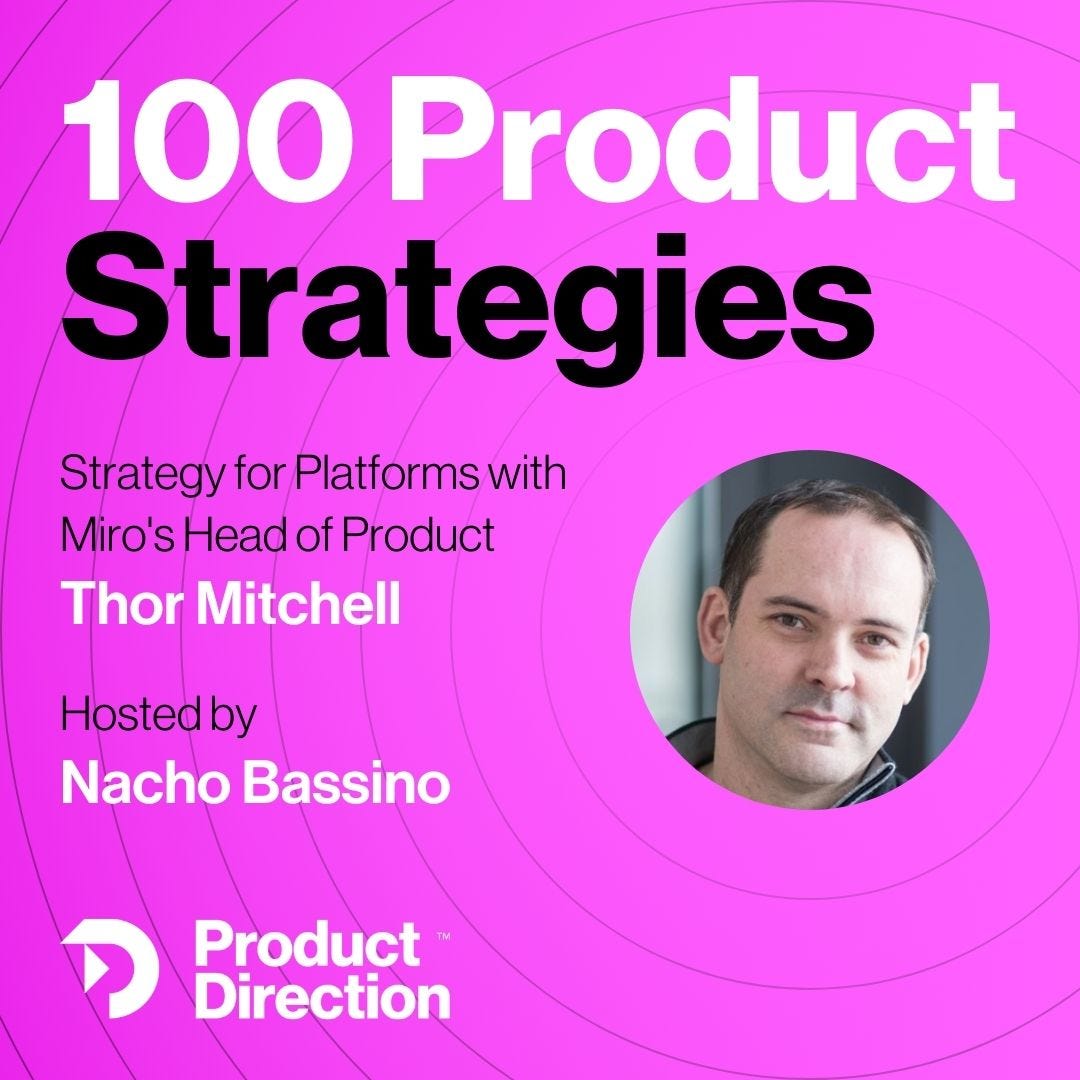How Miro Creates their Platform Strategies
The strategic challenges of building, measuring and growing an ecosystem in support of a larger business, directly shared from a field expert: Thor Mitchell
TL;DR: Platforms are everywhere, and their challenges are hard to understand and will impact even non-platform products. Thor is an expert who shared his learnings building the Miro Marketplace and, previously, the Google Maps Developer’s Platform.
When discussing strategy, we often focus on the most typical scenarios: consumer apps, B2B SaaS, media, etcetera.
But platforms are continuously emerging, and even if you are not working on one, they probably impact you: app stores, social media integrations, etcetera.
The challenges they present for strategy are quite nuanced, ranging from defining complex success metrics to understanding how to align with the larger company strategy.
Understanding how to think differently about their strategies is critical. Thor Mitchell is the Product Director for Miro’s platform teams. He has a long history of working in this field and shared his process, journey, and challenges in developing their latest strategy. This episode is full of wisdom, as you will see in the takeaways below.
Listen now on Apple, Spotify, Google, and YouTube, and read on for my takeaways and highlights of the episode.
My takeaways from this episode
Thor once more highlighted a recurrent topic: your strategy is not a fixed moment in time. The environment, the competitive landscape, and the resources available are continuously changing.
There are two categories of platforms:
The platform is the product (i.e., Stripe). The strategy is more conventional, in terms of finding how to generate value and monetize it as you will do in other products.
The platform is there to support the existing product (as in the case of Miro). The value generated and incentives for the developers are less clear.
Even though Miro has a vast user base, launching the marketplace has the typical chicken and egg problem: to attract users, you need apps in the market, and to attract developers who generate the apps, you need interested users.
Success metrics are tough for platforms that support a product.
The first challenge is that the business impact is a highly lagging indicator, in the order of 12 months. The value is realized when users use new apps in the marketplace. To get there, you implement a change into the API, developers need to get interested in it, solve an exciting use case, and then companies need to connect it, to finally let company-users use it.
The leading metrics as you develop the platform are focused at the top of the developers’ funnel. But it is very nuanced what metrics to measure and how they correlate to the lagging impact they are expecting.
As a marketplace, they have an interesting model dividing levers into 4 big areas:
The logic they use for the strategy is focussing on the bottom funnel for developers, first to avoid throwing money (top of the funnel) into a leaking bucket and also to enable more use cases and a better developer experience, making developers more successful.
Once the bottom of the funnel is sufficiently developed, the focus should shift back to the top of the funnel.
(Note: this sounds similar to what I discussed with Nils Janse from Delibr.)
There is also an interesting challenge in aligning with company strategy: the company is trying to serve specific users and markets, and they need to decide how to improve the platform to attract the type of developers that will solve use cases that contribute to the company strategy.
To reflect the vision, and connect to it, they have a practice called “Painted Pictures.” Thor used a similar process to Amazon’s working backward to describe a future “executive update,” and define the strategy to get there.
To collect insights and prioritize, the team relies heavily on qualitative feedback. They have the leading indicators but often talk to developers to understand what to “unblock” to make them more active.
In terms of selection, they filter opportunities with different criteria:
Assessing the potential impact
Filtering according to company strategy alignment
Checking the 4 areas and evaluating what is more critical at the moment
Using a sort of Kano model, to make sure they cover the basics (documentation, security), but also balance with some high-value bets.
For synthesis, they put the selected opportunities into a narrative, to explain and share the reasons, especially connecting the “developer opportunity” with the impact it will have on end users. On top of it, they use 6-month roadmaps.
Thor’s final learning is that you need to align internally on what strategy means, before starting building a strategy. Otherwise, you may end up doing a huge amount of work that is not valuable since it doesn’t deliver what others expect.
Don’t miss our next episode! Join our substack and be notified when the next episode is published.






